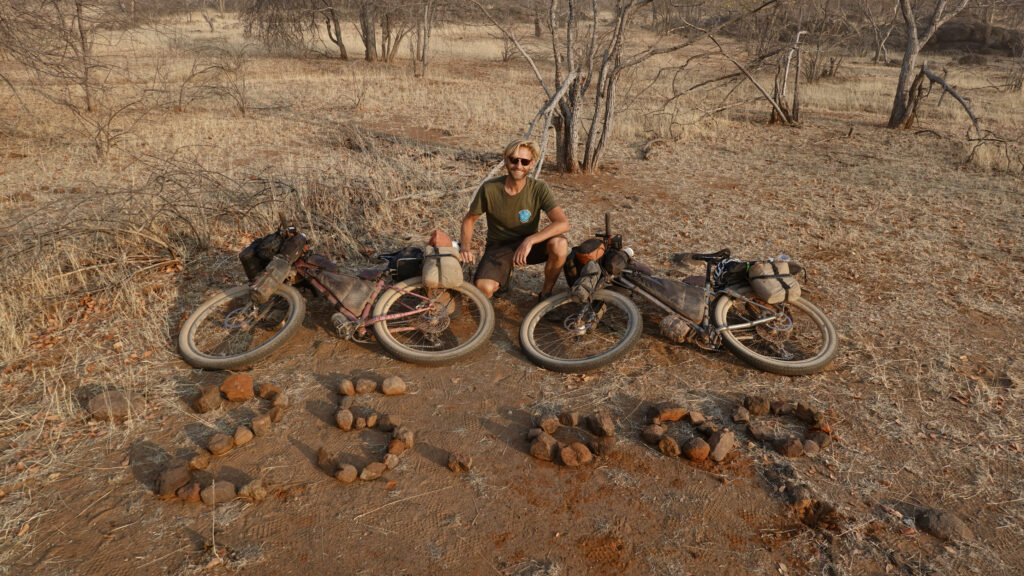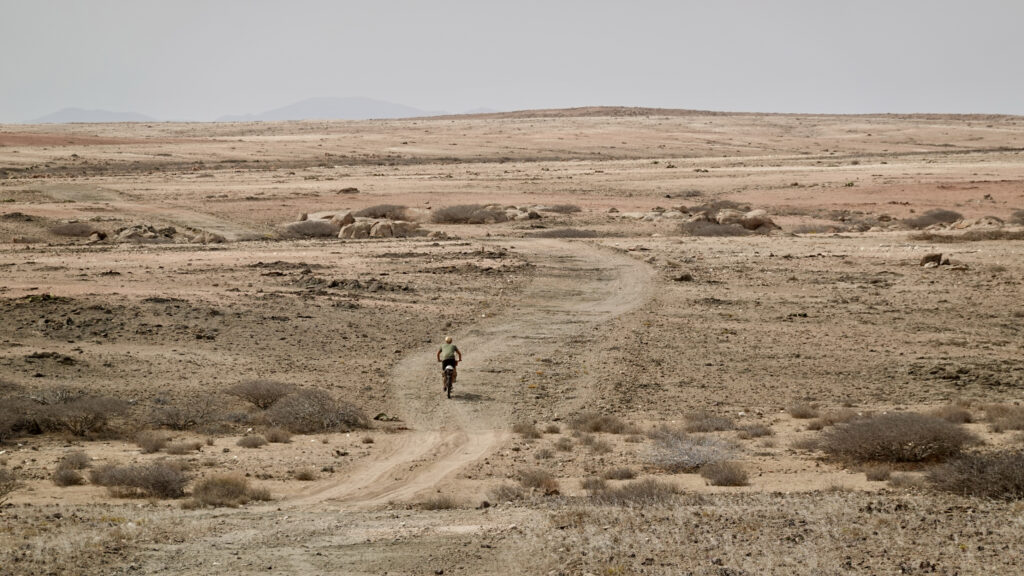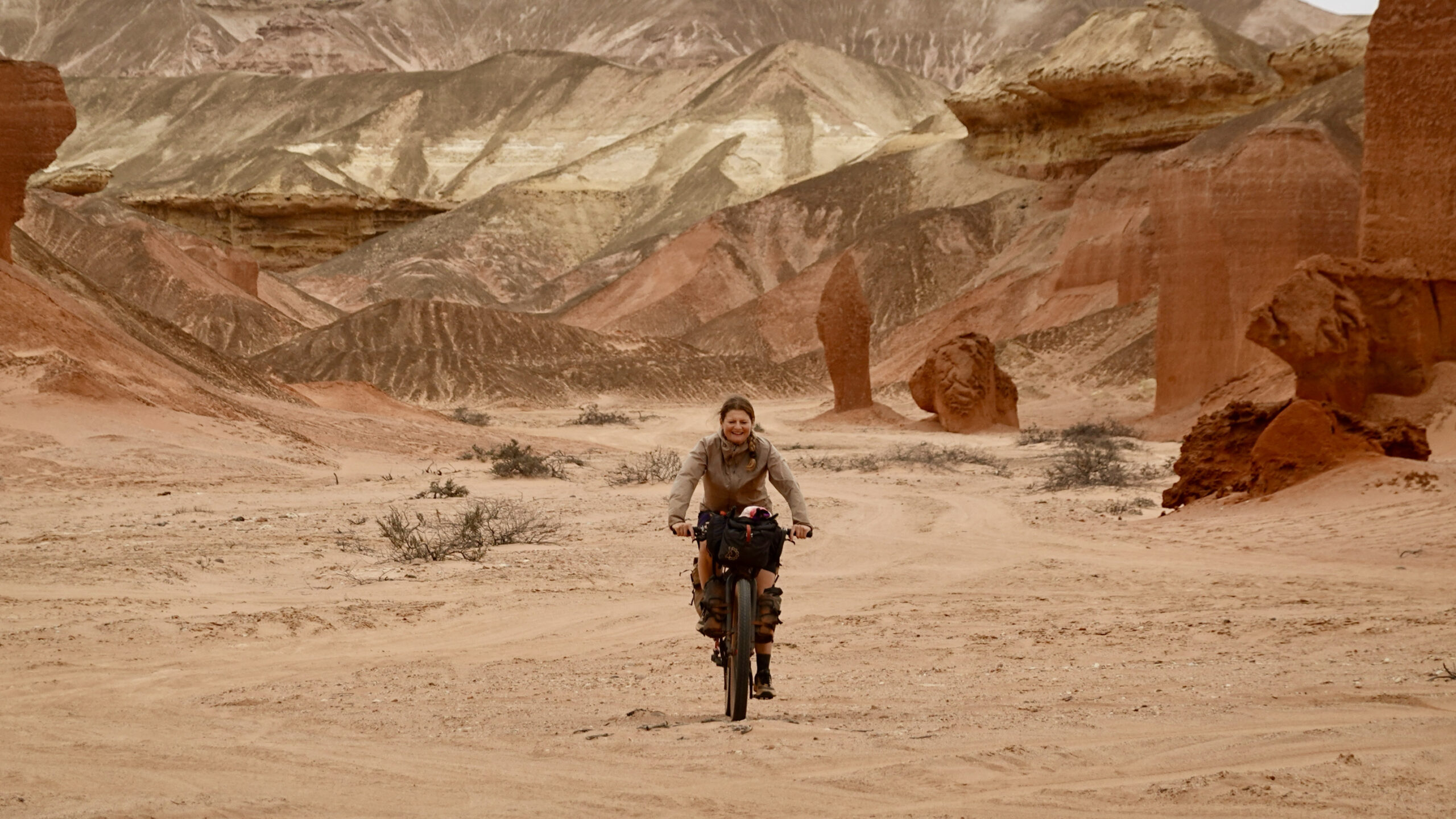Angola marks another shift in our journey. After crossing the Equator, the northern landscapes mirror south of the Equator in reverse order. The country is the world's 22nd largest, and the landscape changes from north to south and east to west. We experience it while cycling through the country. In the north we wake up in a lush banana plantation, in the west we look out again over the roaring Atlantic Ocean, and in the south we drag the bike through sand in the Namibe desert.
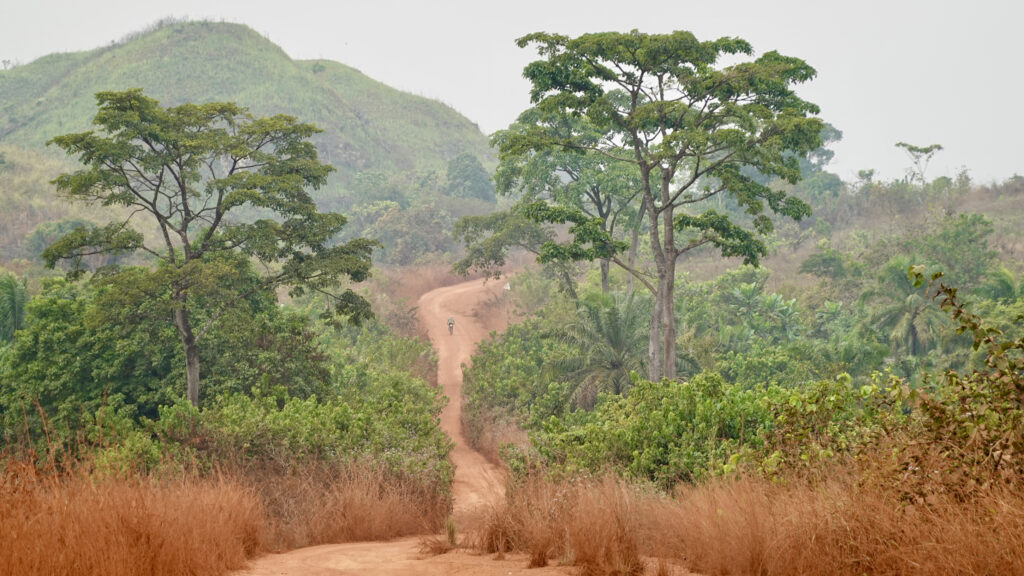


Ambitious route planning
Angola is 1,256,700km2, one of Africa's largest countries, and there is a lot that we want to experience. The country is visa-free for us, which is a nice change, but on the other hand, we only have 30 days before we have to leave the country. So we need to make a detailed itinerary to experience as much as possible in the month we have. We can cycle along the coast to take the shortest route, but the easiest is not always the most fun. So we end up with a challenging but realistic plan of 2500km. Here we see both some of Central Angola, and we also reach the coast. Hopefully we can still make it to the Namibian border before the 30 days are up.
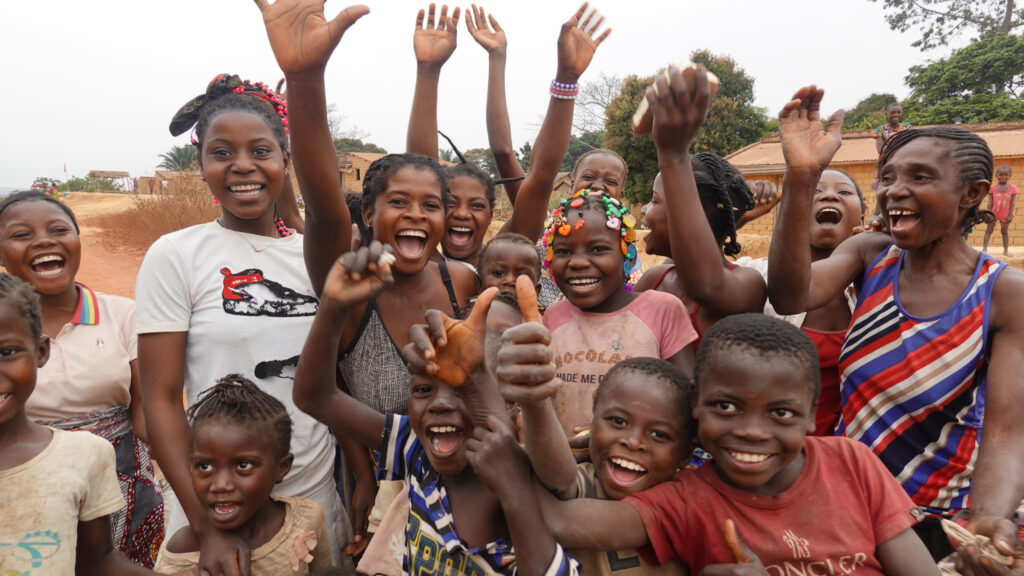
Altitude and cool nights
As we cross into Angola, we head for Pedras Negras de Pungo Andongo. These are large rock formations that are millions of years old that geologists cannot explain why are here on the savannah. The road is hilly with steep ascents and several meters of height, which our legs have to get used to after several months of relatively flat roads. We also have to get used to the fact that the cars drive incredibly nicely. They hold back when oncoming traffic comes, and they don't overtake up hills or push us out into the flowerbed. The cars are not overpacked, and there are no people sitting in the trunk or on top of the roof. On the other hand, it is the same bad petrol with black smoke that poisons us at every overhaul. Angola otherwise has some of the world's best oil and is a major supplier of it, but as we have seen in so many of the African countries, most of it is exported instead of them refining it themselves in the country.
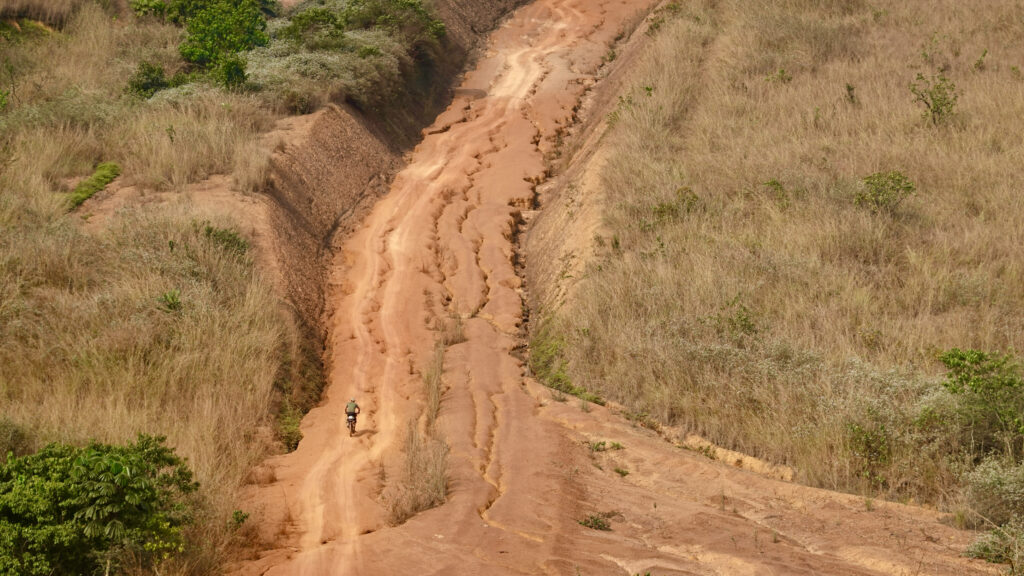

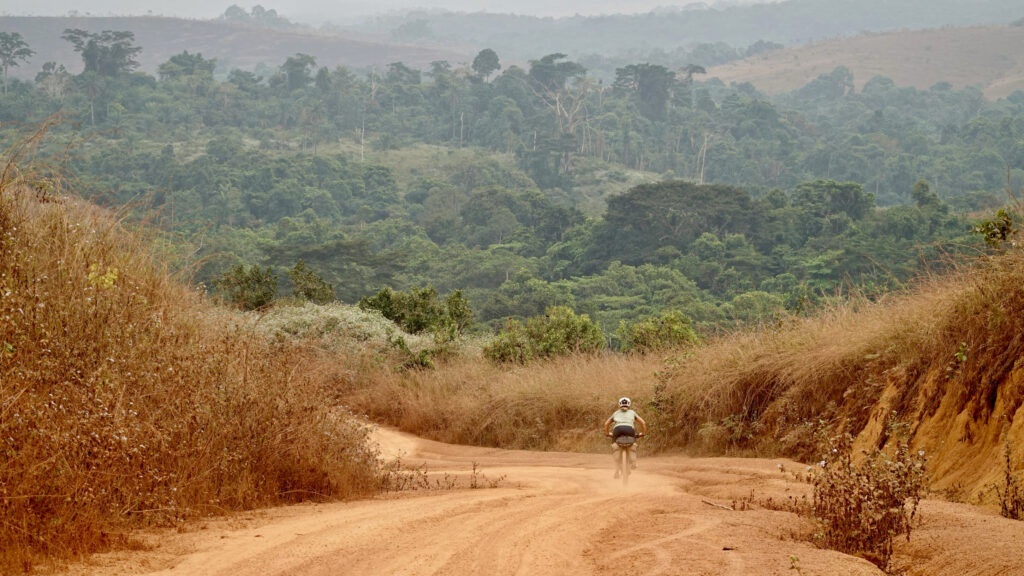
We choose the small dirt roads, there is plenty of space, and it is easy to wild camp. There are few cars on the road and it is quiet when we take a break and at night. It is also new. There are usually so many sounds from the rainforest, cities and the many people everywhere. The clothes are not constantly wet as the air is dry, even though it is still very hot during the day. It is also cooler at night, and we have to find the sleeping bag.
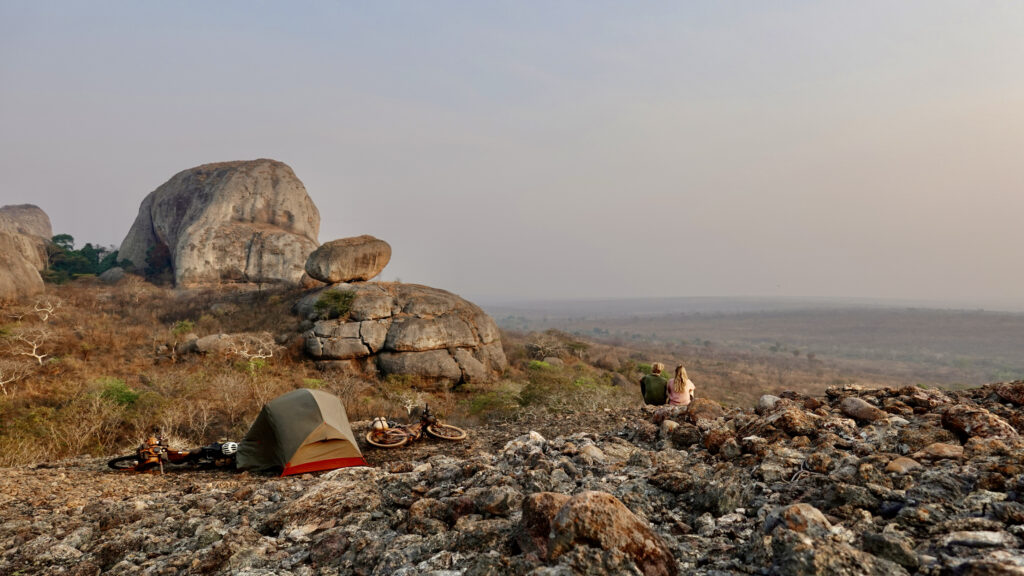
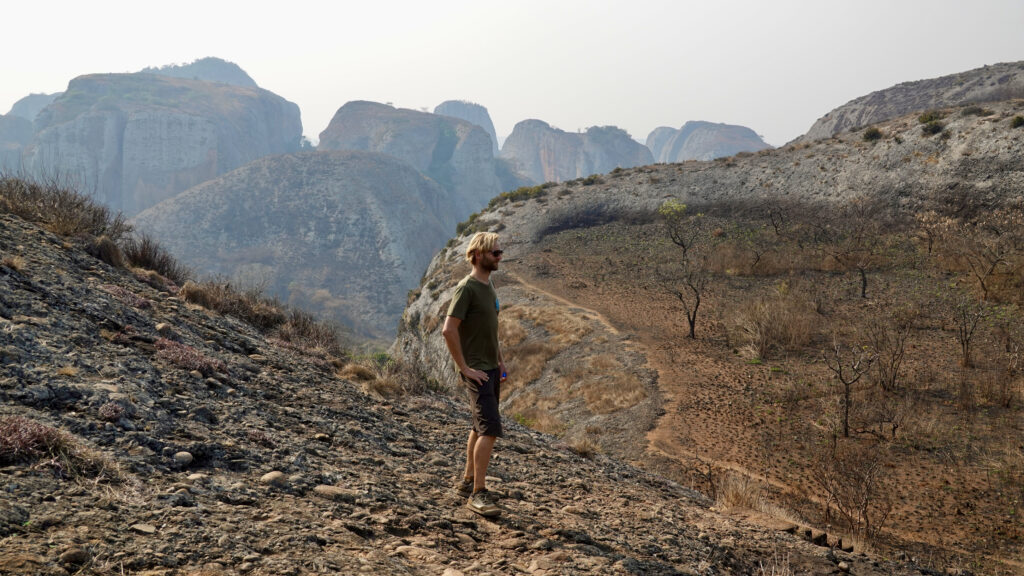
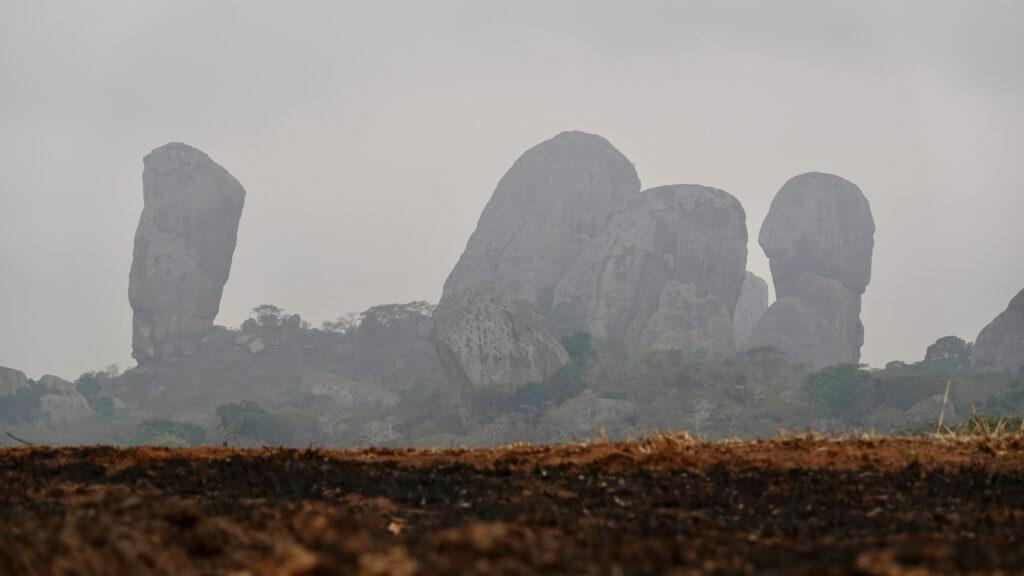
In Pedras Negras we meet a nice group of people from Yemen, Egypt and Mauritania. They all live in Angola – two of the couples in Luanda, and the man from Yemen in a town close by. They wave us over when they see us. They are nice to keep an eye on the bikes while we go up to the top of one of the rock formations and enjoy the view over the impressive landscape. When we come back they invite us for food. They have a grill with them, and they have roasted delicious goat meat. Plus salad, rice and plenty of drinks. It tastes heavenly and is a huge surprise. We immediately think back to Morocco and Mauritania, where people are always so hospitable and share their food. Arab culture in a nutshell.
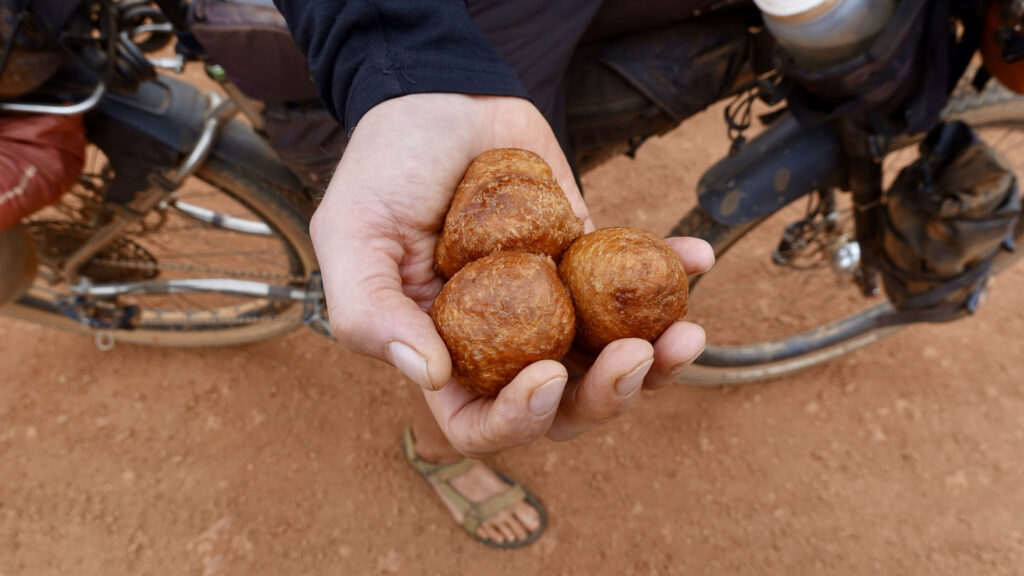
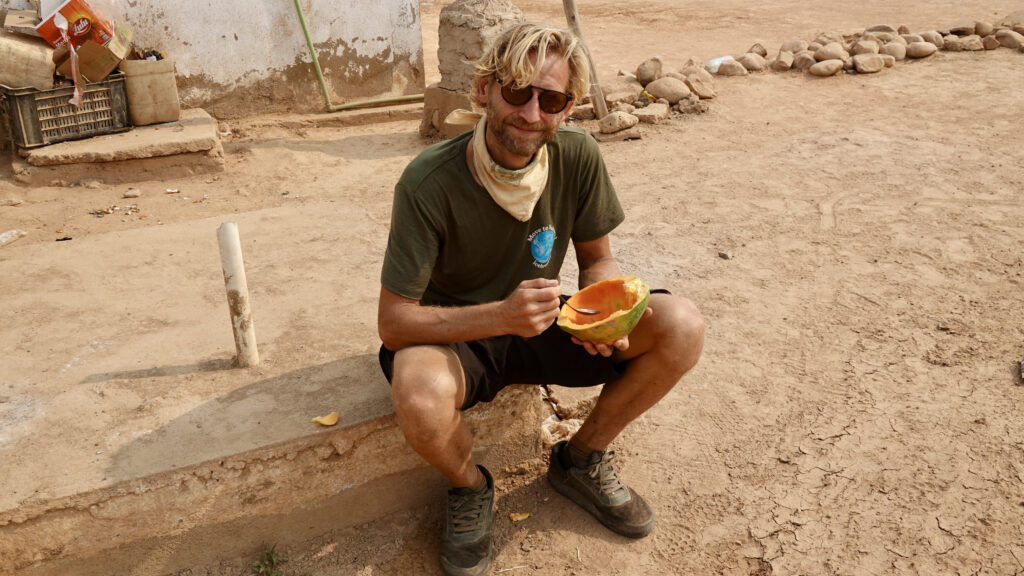

From Pedra Negras, we cycle across the country towards the coast and the Atlantic Ocean. One evening we have stretched it just long enough to find a place for the tent and we are in an area with a lot of people. We turn into a banana plantation and find some houses with a large football pitch. We ask if we can set up the tent. We would like to. There is the most wonderful atmosphere on the football field. Big and small play with old balls, they fart with each other, laugh and do football tricks. A young guy starts doing push-ups to show us how strong he is. Darkness falls quickly, and we start by setting up the tent, while the locals look on curiously. We show them the tent, ours burns and starts cooking rice. A woman symbolizes that she is hungry, and we give her the rest of the rice packet, which she accepts with a big smile. It's such a difficult balance when to give something and when not to. A subject that constantly puzzles and touches us.
The sun disappears completely and only the most steadfast remain, as it is very cold for the locals. And for Danish cyclists who are used to sweating around the clock. The next morning we wake up to a magical view of fog, which lies like a white blanket over the coffee and bana plantation, in the middle of which we sleep. The sun stands like a dimly glowing ball on the horizon with a rosy glow. At one end of the football pitch, a road leads up to a nice old house, which has been burnt and destroyed. We are talking about whether it might be all the way back from the time of the Portuguese in Angola.
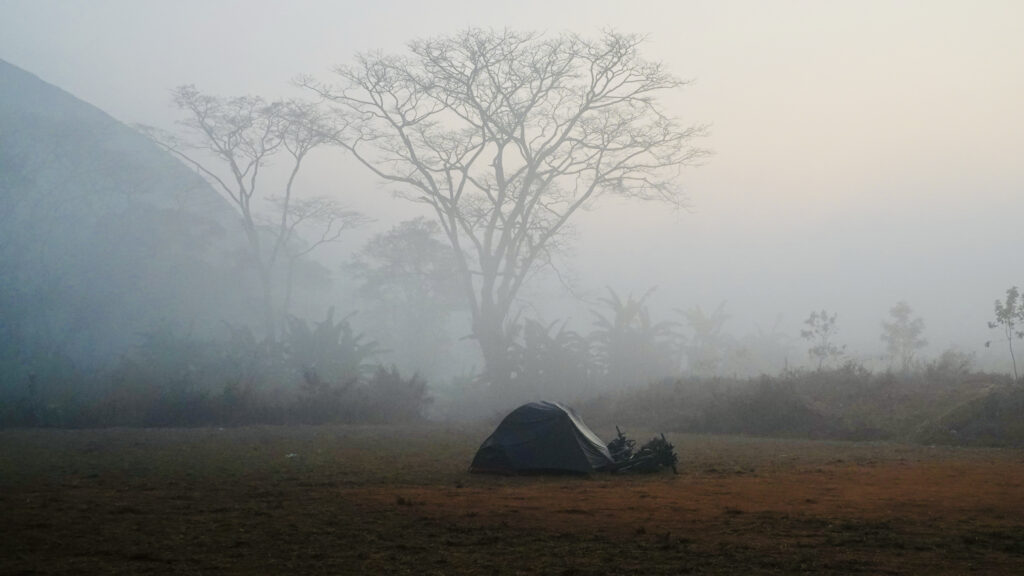
Angola only gained independence from Portugal in 1974, and when the Portuguese left the country they destroyed many of the productions that were in progress. Agriculture was going well, and Angola was, for example, the fourth largest coffee producer in the world. Instead of the people coming together and using the freedom to strengthen the country, civil war arose between three factions; UNITA, FNLA and MPLA, which lasted until 2002.M. It resulted in many deaths, destruction of housing, public institutions, infrastructure such as the railway and agriculture. Mines were laid out like a carpet over the land, and for a long time afterwards you had to be careful if you moved off the road. Fortunately, after achieving peace, Angola experienced recovery and economic progress. However, the last few years have been characterized by high inflation and many are dissatisfied with the current president. Many find it difficult to provide food for the family and maintain their standard of living. You can clearly feel it when we cycle through the country. Although it is also a country that has put the war behind it and is looking forward.

The man from the adjoining small village comes to visit in the morning wearing a long warm beige coat tied at the waist. He fits right in in New York or at Vesterbro. The man has a bunch of bananas with him, which he would like to give us some of. It is simply so sweet of him, and we say thank you very much. We cycle from the football pitch and through the plantation down towards the country road. It is not exactly a modern coffee and banana plantation with long straight rows and a highly efficient transport system for the bananas, as we saw, for example, in Costa Rica. The trees are interspersed with each other, and we cycle through the plantation on a winding dirt road, while the morning light glimmers between the trees. We are overtaken by a motorbike loaded with large bunches of bananas and afterwards two girls come galloping with a large bunch of bananas each on their heads. They are heading down to the road where the bananas are loaded onto a small truck to be taken to the market and sold.


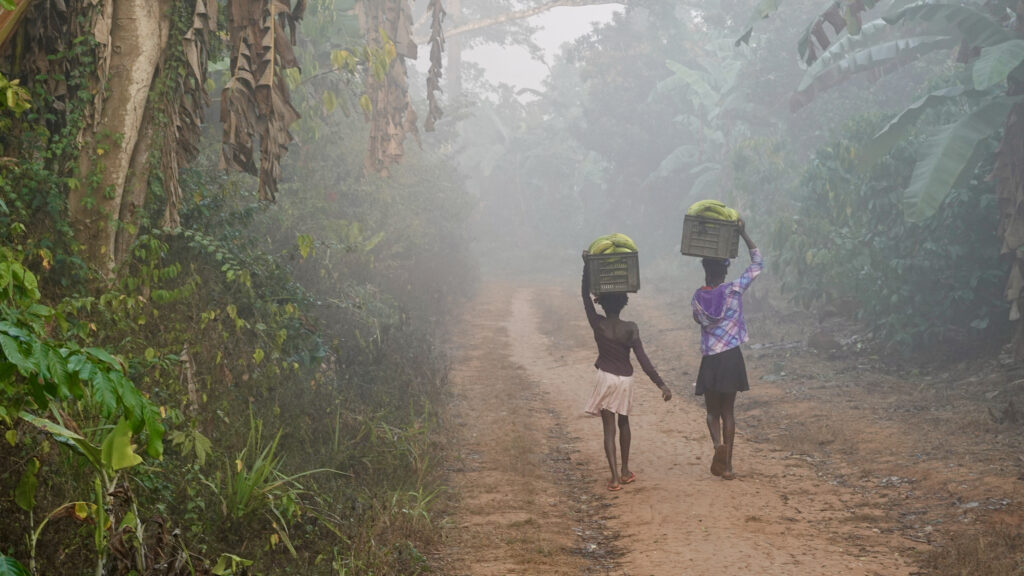
Pumangol and Pastel de Nata
Much has changed as we cycle into Angola, but the ability to find nutritious food in the small towns does not change in central Angola. Or at least there isn't much variety. Even if we see a large supermarket in a city, there is not much on the shelves. In return, we get a good tip from another cyclist. The gas stations, also new in Angola, have coffee and pastel de nata, a Portuguese specialty. It is a small puff pastry shell with cream. The first time we encounter a gas station is in the middle of nowhere before a small town. It was with wide eyes that we ordered two espressos with milk. Coffee and cake always give cyclists an instant tailwind.
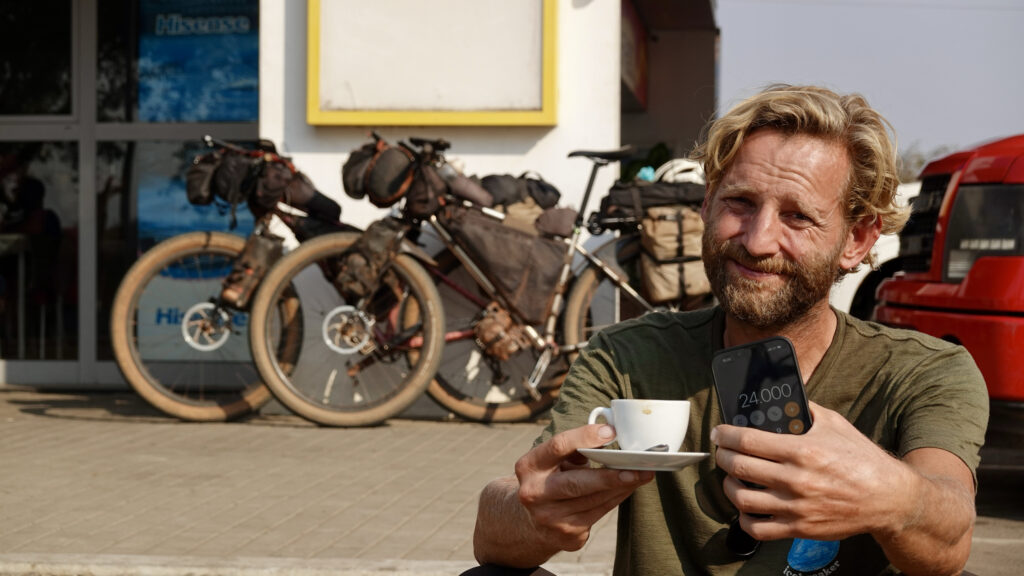
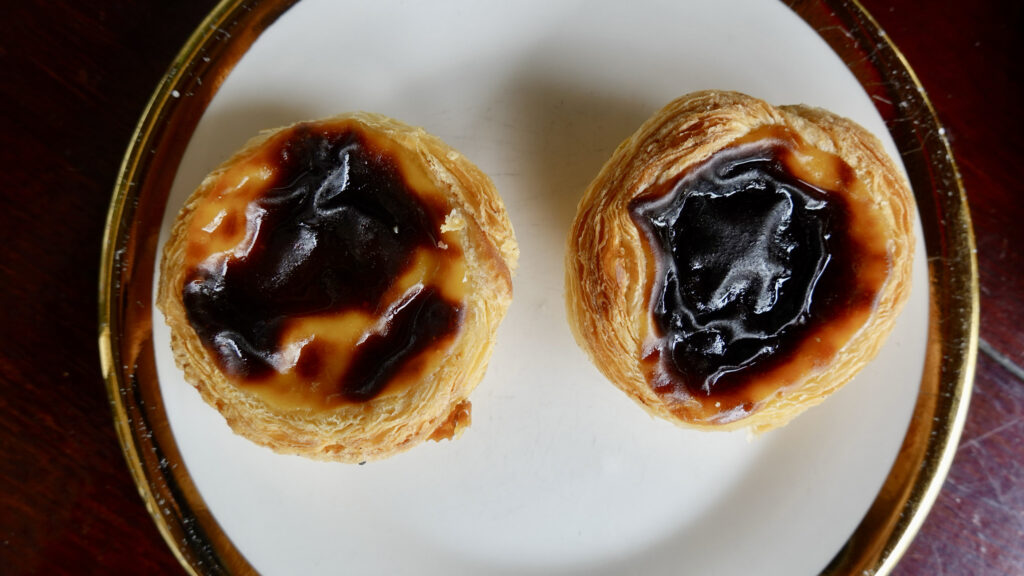
Reunion with the Atlantic and German friends
We cycle west to the town of Lobito on the Atlantic Ocean. Here we will meet Toby and Diana from Germany for the fifth time. The first time we met was at a beach bar in Gambia, where you can spend the night for free if you eat in the restaurant. Win win for a couple of hungry cyclists. When we get down to the beach there is an old charming Unimog owned by Toby and Diana. They have driven down here from Germany, and they are also on their way to South Africa. We had a nice evening together on the beach in Gambia and wave goodbye the next day without thinking that we will meet again. But in total we have met three times by chance and twice planned. So cozy. We reach Lobito on a Friday afternoon, and Toby and Diana invite us to a delicious tomato risotto and beer in Unimogen. So sweet of them. We have two pleasant days together, where we talk about everything between heaven and earth, laugh, go for a walk in the city and eat more pastel de nata. On Sundays we play cards in Unimogen and eat Diana's home-baked banana cake. It feels like a relaxing Sunday at home.
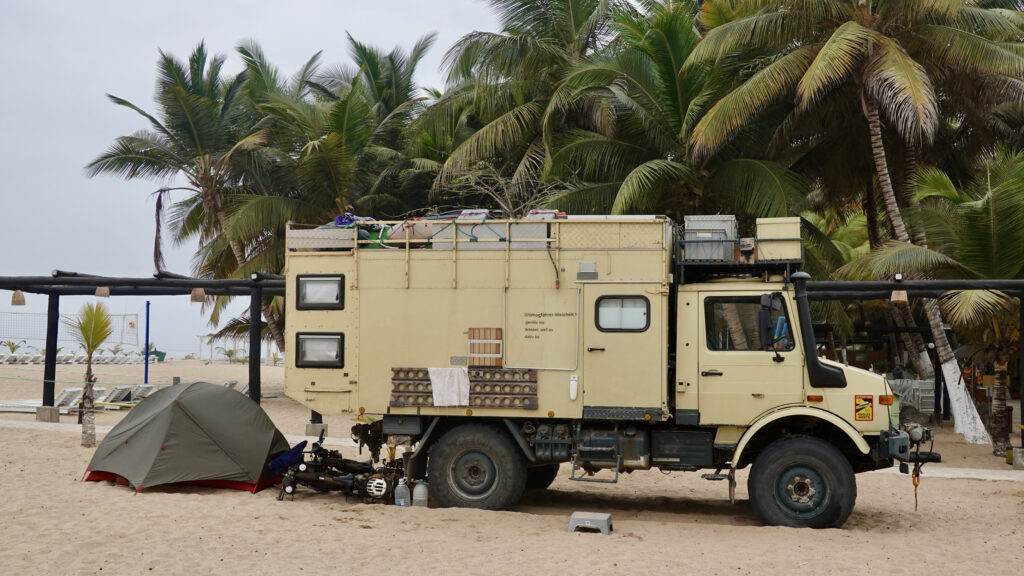
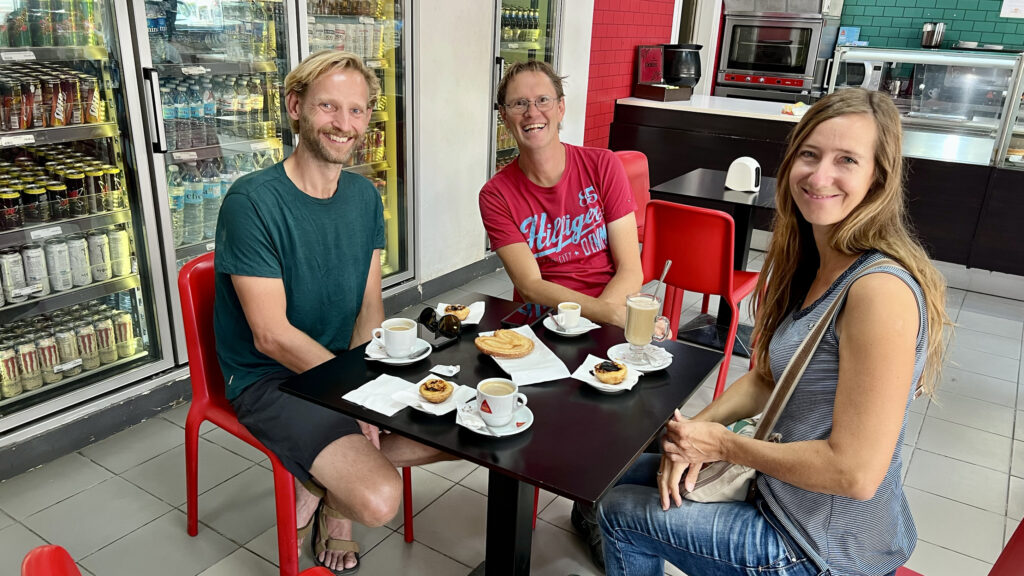

Cycling along the coast is another great experience in Angola. The huge roaring Atlantic hits the coast and the wind bites the cheeks. As the kilometers tick by, it becomes more and more barren. It's crazy to experience how the landscape really changes. The green disappears and we are now back in the desert. At the same time, it is also impressive how the population manages to cultivate agriculture at the foot of the hills. We can hear the water pumps running and there are small markets along the road with delicious vegetables and fruit. In some places they build protection from the wind out of sand for the small young plants, so that they can become resistant to the dry air and the harsh rays of the sun. We don't see many agricultural machines, but most work is done by hand. In the morning, we see several people with a large hoe over their shoulders on their way to the field. Young and old.

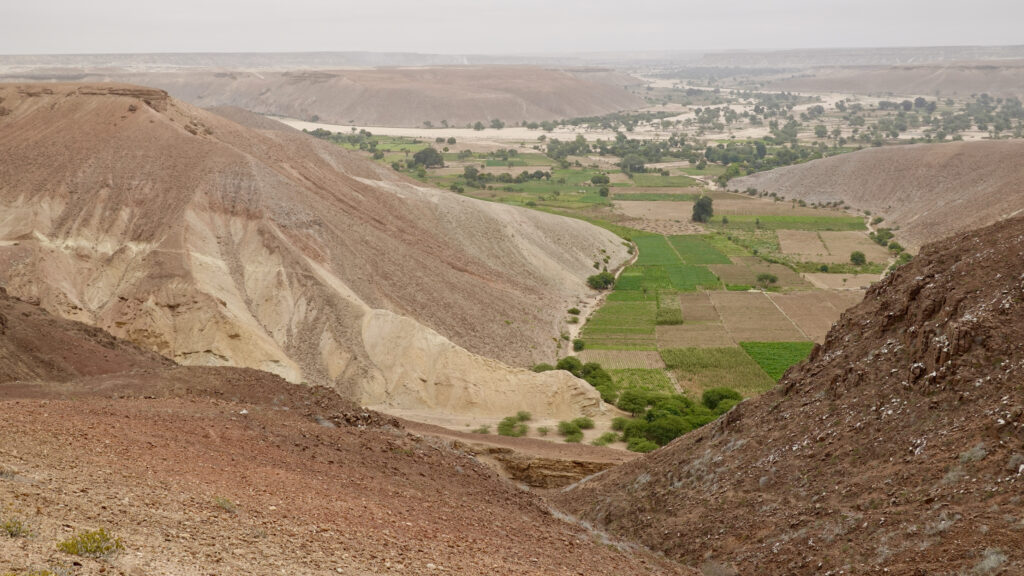
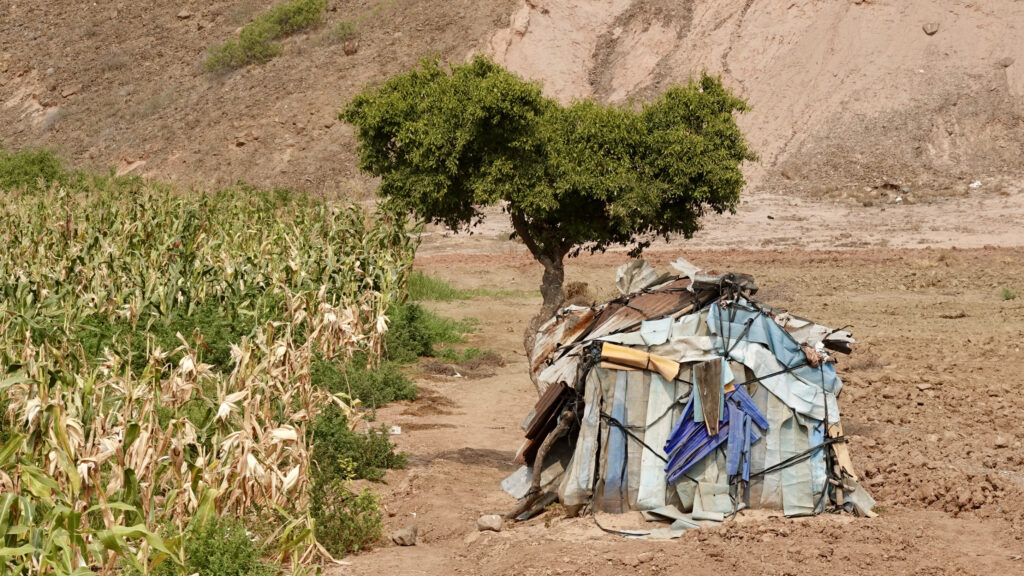
Crossing the Namibe desert and Iona National Park
We make a stop in the town of Moçâmedes, which the town was renamed after the Portuguese left the country. The former name is Namibe and is still the name used by the vast majority. Here we take a rest day and decide on the further journey towards the border with Namibia.

We are looking at a route that goes through the Iona National Park, which is part of the Namibe desert and which ends at the border with Namibia. The challenge is that there is no water on the first part of the route, and we only have a little information about the condition of the roads and villages where we might be able to find supplies along the way. It is approximately 600km, so there is no possibility that we can bring water with us for the entire route. The alternative is an asphalt road to the larger city of Lubango, which we are not that interested in. We would rather go on an adventure and get full value for the wide tires on the bikes.
The owner of the guest house we are staying at first says that it is better that we drive through the park or with a tour company. She thinks that cycling sounds crazy. When she understands that we are not interested in that, she puts us in touch with the park manager, who happens to be in town.
We meet with Pedro from Portugal, who has been responsible for the park for the past three years. Pedro is super cool and he has a detailed map of the park with roads that we don't have on our own maps. We look at routes and he gives us good advice on the most beautiful route through the park. Pedro also promises to send word to his people at the entrance and another place in the park to give us water. We are deeply grateful, because it makes the crossing via small deserted roads possible.
We can feel the tension in our whole body for the unknown that awaits. We pack the bikes with food for 5 days and 7 liters of water on both bikes. We cycle off, and it doesn't take long before we are reminded that we are now out of town again.
We see something big on the road, and it is a huge item that has been run over. It is one and a half meters long from tip of tail to snout. Kenneth gets off the bike to photograph it, while Marie looks on from a good distance. A truck comes and runs over the animal again. Right on top of the head, and it gives a huge splash. We see a woman and some children walking purposefully towards the animal. A car comes and first drives past the animal, but then stops and reverses to take a closer look. The woman shouts something, and we imagine it's alla – 'fingers away! – it's mine. Quite right. The woman takes two large stones which she throws at the animal to make sure it is completely dead. She then takes it by the tail and pulls away with it. Today's dinner is secured.
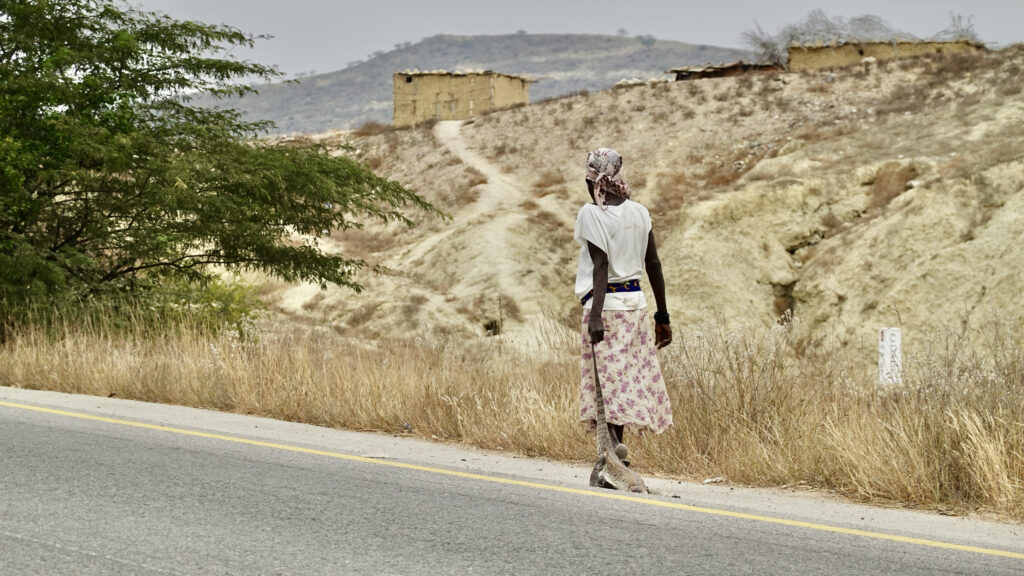
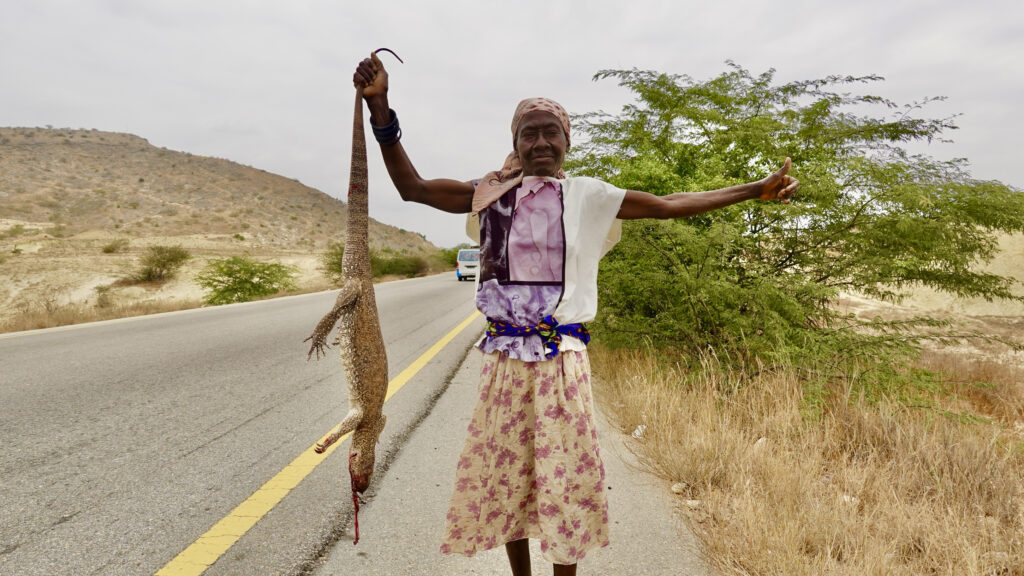
After 70km we turn off the road and onto a sandy track. The eye meets sand, sand and sand as far as we can see. Now it starts.
First stop is Colinas, which is a canyon of red sandstone in all shapes and constellations. The red colors stand in great contrast to the colorless sand. Wind and water have eroded the rocks so that it looks like an art exhibition. Some of the rocks stand alone and shine in the landscape and others are part of a larger collage. We are completely alone in this impressive landscape and find a nice spot for the tent for the night. There is complete silence, no internet connection and no lights from nearby towns. There isn't even a dog that does. Or mosquitoes that want to feast on our blood.
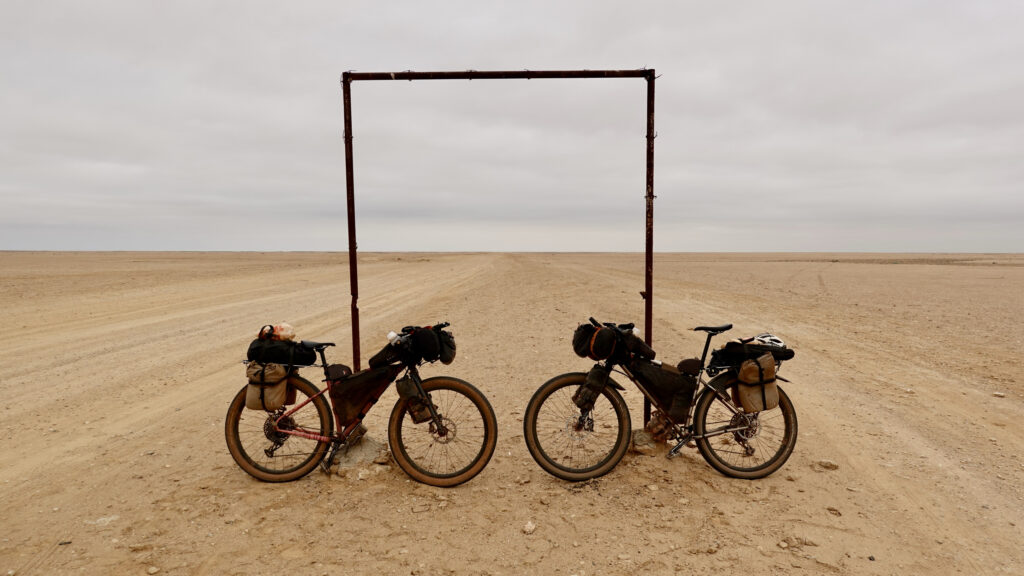
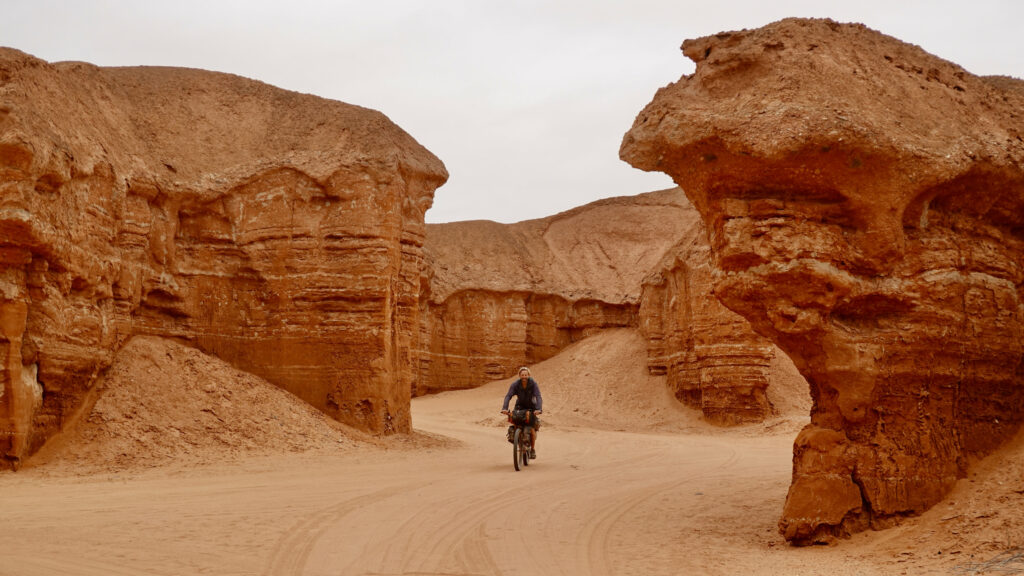

The next day we continue into the beige landscape with flashes of pink. We meet a local who keeps signaling that we must turn around and that we cannot get through. We smile and signal that we have it under control. Later, the sand gets so deep that we have to push the bikes, and we wonder if that's what he meant. If we have to push the bikes all the way, we will run out of food and water. The landscape is magnificent, and we have a Turkish belief that it will probably be fine. We feel at home in this rugged landscape, in which we love cycling so much.
The first day is a mix of cycling and pushing the bike and then cycling a bit again. But it is so beautiful that we forget all about the efforts. After 100km we reach the entrance to the park, where we are allowed to pitch the tent for the night and get water from the guards' two blue water barrels.

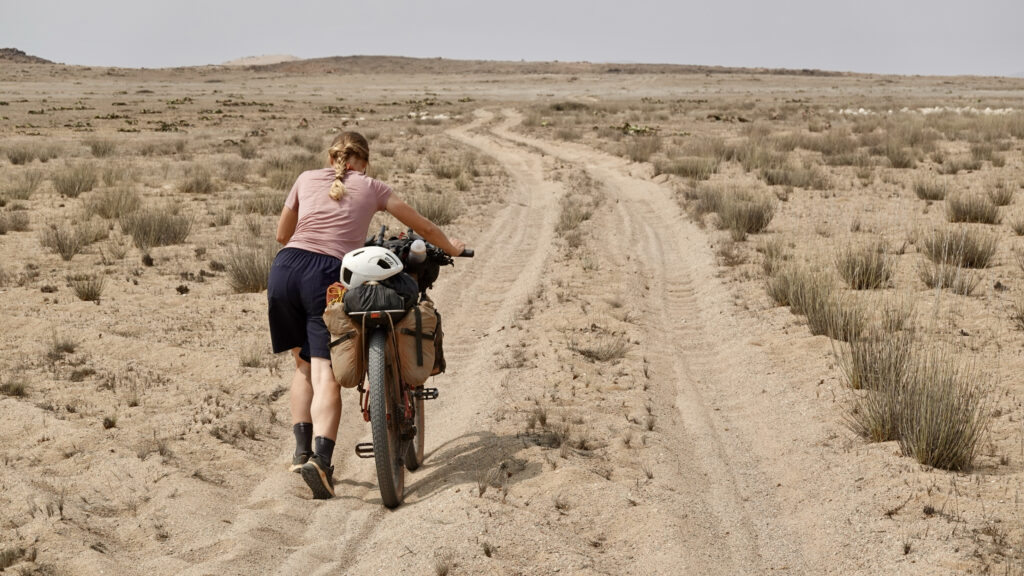
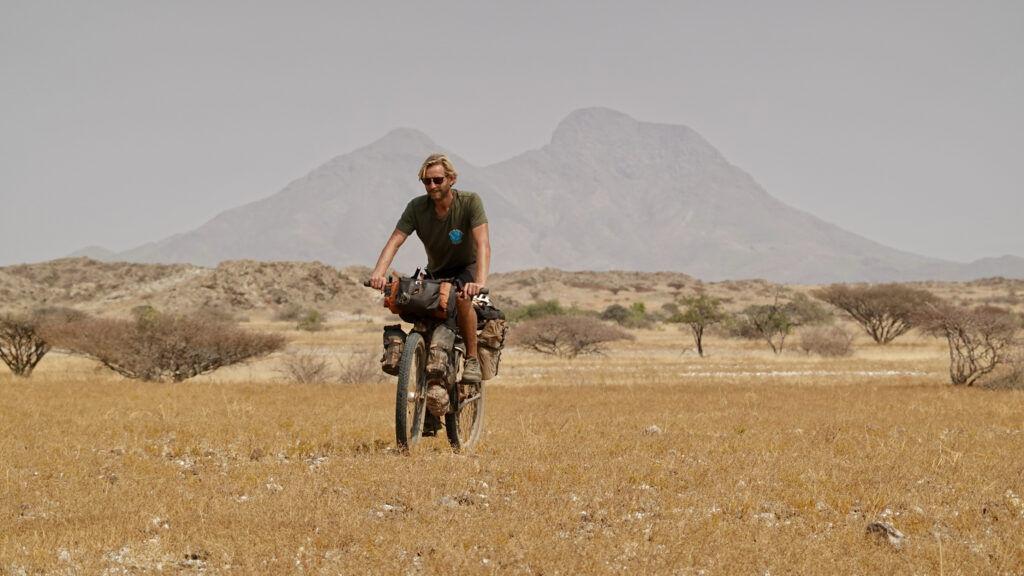
Iona National Park is the oldest park in Angola and is located in the southwest corner of the country. There have been desert elephants, giraffes and black rhinos in the park, but they have all disappeared due to poaching and civil war. The park released giraffes last year, and it is also planned to reintroduce elephants to the park.
The cycling through the park is impressive, and we can feel the endorphins bubbling in the body. We must stay focused to keep the wheels turning and tackle the challenging landscape. The tire pressure is adjusted to the rocky terrain and soft sand, so that we can float on top as much as possible. Every day the landscape changes. White sand. Rocky desert. Small mountains. Scattered trees. The colors next embrace the entire scale.
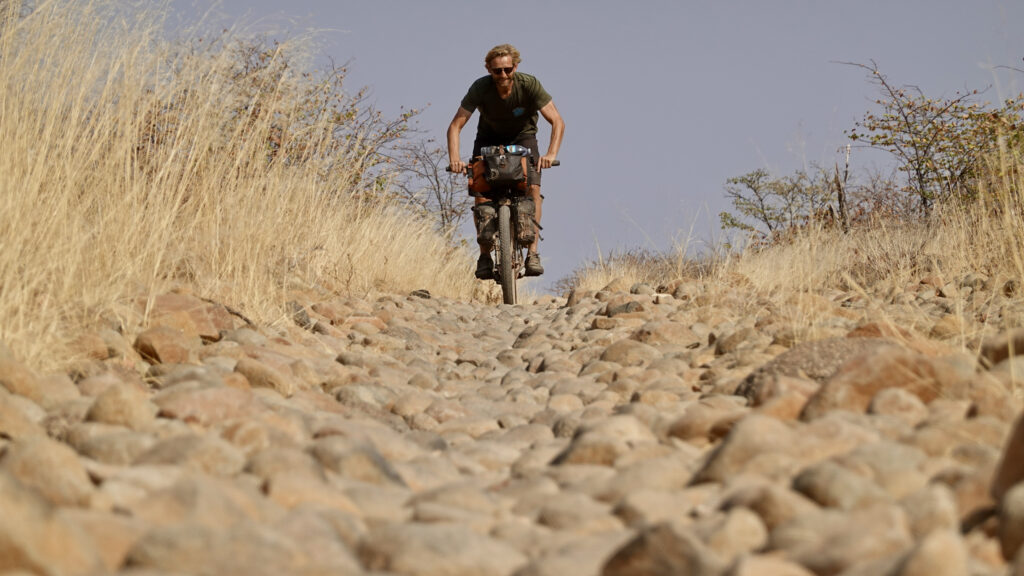
There is not much vegetation, but there is the desert flower above them all; Welwitschia, shines like a queen. It has two leaves, which almost grow above the ground, and the plant can become very old. It absorbs moisture from the air through the leaves, and therefore does not need as much water through the roots. It provides shade for the insects, and then the animals can chew on the leaves to get liquid if there is a longer period of drought. We cycle a small detour to see a giant Welwitschia. It is about a meter high and a meter wide, so it must be really old. Leaves and flowers are intertwined and it looks like a modern sculpture with so many details to discover and lose yourself in.


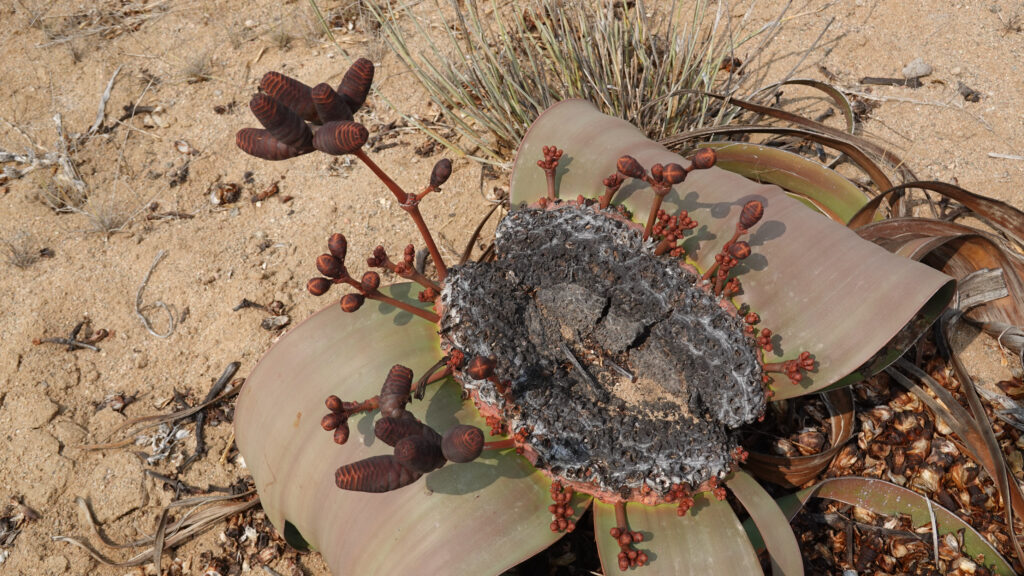
We are constantly scouting for animals and we see white pelicans, springbok and oryx from a long distance, but unfortunately no giraffes. We later find out that there are only 10 giraffes in this huge area, so you have to be lucky to see them.
It is difficult to explain these natural experiences, but for us it is almost divine to be in this breathtaking landscape. The silence is so great that we can hear our own thoughts. We can feel the feeling of freedom in the whole body and unity with nature.


We cycle on the last part of the route through small Himba communities. It is a proud and visually brightly colored folk tradition. They herd cattle and goats and live a semi-nomadic life in this area. They laugh when they see us on the bikes and point to our legs. They listen to loud music on their small motorbikes with a speaker around their necks while they have a goat on their lap and the wife on the back with a child on her back. We will meet even more of the Himba people in Namibia, which we are looking forward to.
As we approach the Namibian border, the road becomes a wide dirt road. As we cycle back to civilization, we think about the past week's experiences in and with nature.
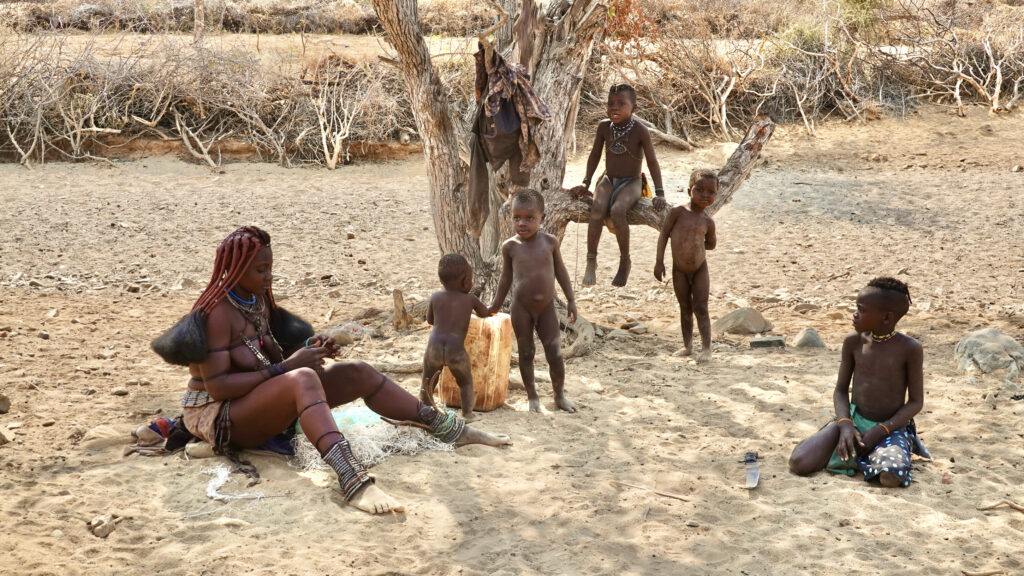
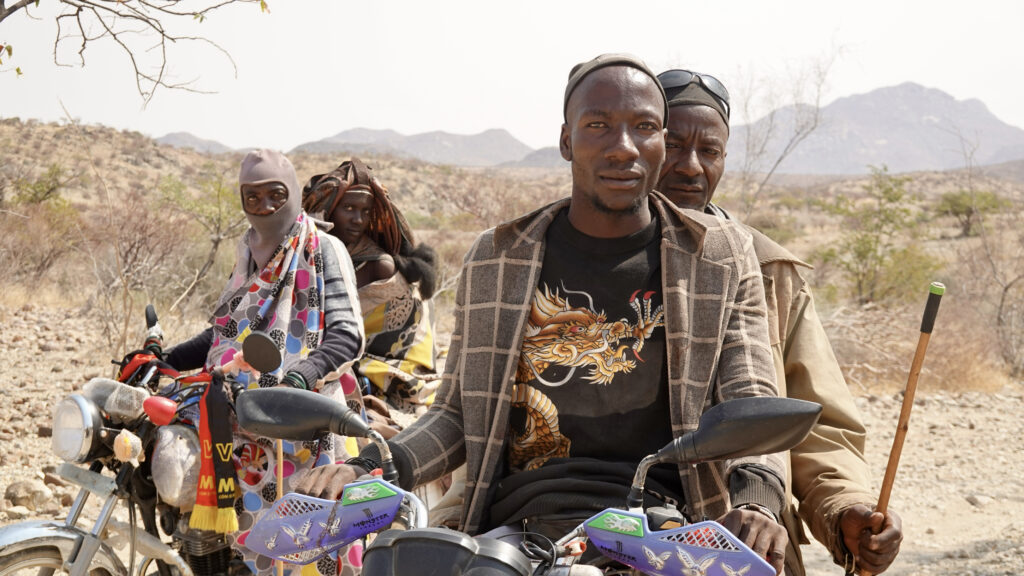
Angola, the country of transformation
The day we cross the border into Namibia, the counter also crosses 25,000km. After 2,359km. through Angola we stamp out of the country with a two-day buffer. Beforehand, we had not related to Angola that much. We didn't have to apply for visas and there are no red travel guides. We have had so much focus on the Congo and Namibia. But what a fantastic country Angola is. It deserves attention with its impressive changing landscapes and welcoming locals who have humor and easy smiles. As we cycle through the country, we transform ourselves along with the landscape for the last part of the journey, where a large part remains in the desert.
Angola is a big contrast to the last months in Central Africa, where there has been full speed ahead with many people meetings, which is also super cool and interesting. That is the beauty of travel and of contrasts. It highlights the best of each country.
